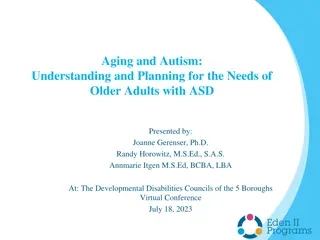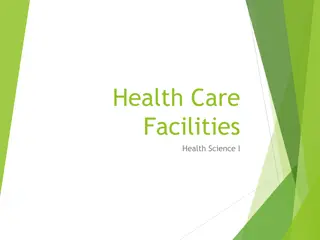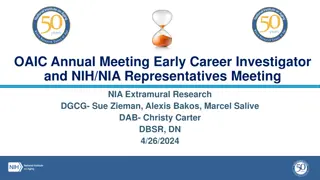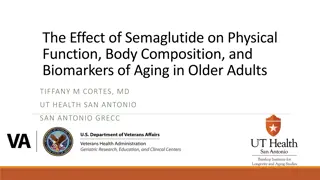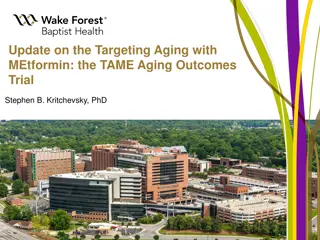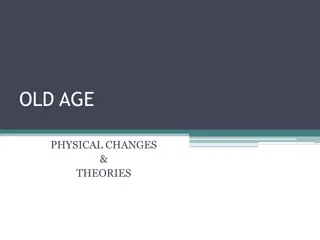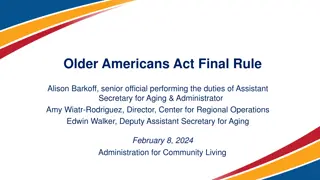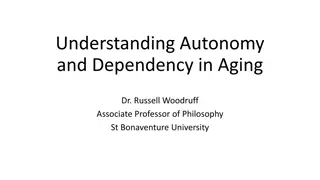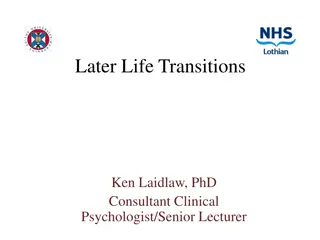Addressing Challenges in Aging School Facilities
Upgrade of technology infrastructure, installation of new surveillance cameras, refurbishing of floors and locker rooms, and construction of secure vestibules are some of the initiatives being undertaken in aging school facilities. Concerns include safety, maintenance of building envelopes, energy efficiency, climate control, and student achievement. Questions raised relate to infrastructure, student potential, impact of environment on learning, and energy consumption in providing a conducive learning environment. Addressing these challenges is crucial for ensuring student and staff safety, improving educational outcomes, and managing rising energy costs effectively.
Download Presentation

Please find below an Image/Link to download the presentation.
The content on the website is provided AS IS for your information and personal use only. It may not be sold, licensed, or shared on other websites without obtaining consent from the author.If you encounter any issues during the download, it is possible that the publisher has removed the file from their server.
You are allowed to download the files provided on this website for personal or commercial use, subject to the condition that they are used lawfully. All files are the property of their respective owners.
The content on the website is provided AS IS for your information and personal use only. It may not be sold, licensed, or shared on other websites without obtaining consent from the author.
E N D
Presentation Transcript
SWMHS 57 (Built in 1962) SMS 51 (Built in 1968) SUES 15 (Built in 1952 and remodeled in 2004) Truman 47 (Built in 1972) Eisenhower 50 (Built in 1969) Arleth 60 (Built in 1959) Wilson 86 (Built in 1933) Selover 65 (Built in 1954)
Upgrade of technology infrastructure Installation of new interior and exterior video surveillance cameras. Refurbishing of cafeteria and gymnasiums floors. Refurbishing of girls and boys locker rooms. Paving of parking lot. Painting of rooms and replacement of blinds Construction of secure retention vestibule.
Although some of the windows and doors in some of our buildings have been replaced over the years, many of them are the originals that were installed when each school was constructed. While we have performed work on our roofs, the majority of them are over 20 years of age. While many may have been replaced over the years, most of the mechanicals, such as boilers and unit ventilators, are either the originals or are nearing 20 years old. While some have been upgraded through the years, many of the electrical grids are the originals. Although one school is fully and conditioned with an antiquated system and larger rooms in several schools are currently being air conditioned with very inefficient mechanicals, we still do not have climate controlled environments in our schools.
How can we keep our students and staff safe in our aging facilities? Are our building envelopes and roofs sealed and safe? How can we continue to increase student achievement? Are our students meeting their potential as learners? Does the climate in our schools environments impact student learning? Is the temperature in our schools conducive for optimum teaching and learning throughout the entire school year? Cool in spring/fall/summer? Warm in the winter? Do our electrical grids generate enough power for our students and staff? Do we have enough power for the increase in technology and potential HVAC? Can we develop an in-district 18-21 year old students with disabilities program? Can we educate our students better and more cost effectively? If we want our district bus drivers and aides to transport all or most of our students, can we safely maintain the busses? If we are going to bus more of our students and be less reliant on vendors with less competent drivers, can we safely maintain the additional busses? How can we offset rising energy costs while still leveraging technology and providing healthy climate controlled environments? How can we increase our electrical infrastructure without increasing energy consumption and paying higher energy costs?
Reparation or Installation of New Central Heating and Cooling Systems Large rooms (media centers, cafeterias, gymnasiums) Replacement of Inoperable or Inefficient boilers and Existing Classroom HV/Inefficient HVAC Unit Ventilators (UV) with high Efficiency Boilers and HVAC UVs New and/or Revamped Electrical Infrastructure Power grids New Building Envelopes Roofs Windows Doors Renovations to the Selover School in Order to Make it an 18-21 Year Old Program School Construction of a New Bus Complex 3 bay garage, offices, break rooms Installation of Solar Panels on Applicable Roofs
Research strongly and universally correlates increased student achievement in climate controlled environments. Teaching is improved and learning is enhanced. A proposed statute will require classrooms to be between 65 and 79 degrees and those not meeting those standards be relocated. More than half of NJ Schools are fully climate controlled. In Middlesex County 92% of districts have some schools that are fully and others that are partially air conditioned. Moreover, in 50% of the districts, all schools are fully air conditioned.
11 out of 19 days in which the temperature in ground level classrooms was 80 degrees or more and potentially 90 degrees or more on 2ndfloors.
10 out of 15 days in which the temperature in ground level classrooms was 80 degrees or more and potentially 90 degrees or more on 2ndfloors. 3 days were potentially 100 degrees or more on second floors.
12 out of 17 days in which the temperature in ground level classrooms was 80 degrees or more and potentially 90 degrees or more on 2ndfloors. 4 days were potentially 100 degrees or more on second floors. On October 2nd temperatures are expected to be 90 degrees, which will mean that it will probably be 95 degrees in ground level classrooms and 105 degrees on 2ndfloors.
Currently we educate all our 18-21 year old students with intellectual disabilities out of the district, which when their tuition is combined with their transportation can cost up to $80,000-90,000 per student. If we were to develop an 18-21 year old program and locate it at the Selover School, we could potentially save the district $960,000 in 2021-22 $1,920,000 in 2022-23 2,880,000 in 2023 and each year afterward We could also generate between $200,000 and 300,000 per year. However, we need to renovate the Selover School so that it meets NJDOE school facility requirements. Between the money saved and revenue generated, we could potentially pay for the cost to renovate Selover in 3-4 years.
Facilities Bond Referendum (aka. Referendum) Energy Savings Improvement Project (ESIP) Lease/Purchase Finance Agreement (LPA) Power/Purchase Finance Agreement (PPA)
A process whereby the voters of a municipality are given the opportunity to approve or disapprove a proposed new capital project to construct new or renovate existing facilities. An election is most commonly required in connection with general obligation or full faith and credit bonds. Requirements for voter approval are based on statute and/or local ordinance.
NJ law allows government agencies to make energy related improvements to their facilities and pay for the costs using the value of energy savings that result from the improvements. Under Chapter 4 of the Laws of 2009 (the law), the Energy Savings Improvement Program (ESIP), provides all government agencies in New Jersey, including public school districts, with a flexible tool to improve and reduce energy usage with minimal expenditure of new financial resources.
School districts can also use lease/purchase agreement financing for busses, equipment and even construction projects. This allows a district to receive larger amounts of funding up front, which can speed up construction and enable a district to put new and remodeled facilities into service more quickly, as well as reduce the odds of probable inflation in construction costs over time. As is the case with equipment leases, as long as the district can afford the repayment of the lease within five years or less, capital projects such as new construction, building renovations, and additions can be financed through a five year lease-purchase agreement. However, these payments must be made within the school district s operating budgetary cap, and must be considered as a part of its long-range facilities plan budget planning process.
A Power Purchase Agreement (PPA) is an arrangement in which a third-party developer installs, owns, and operates an energy system on a customer s property. The customer then purchases the system's electric output for a predetermined period. A PPA allows the customer to receive stable and often low-cost electricity with no upfront cost, while also enabling the owner of the system to take advantage of tax credits and receive income from the sale of electricity. Though most commonly used for renewable energy systems, PPAs can also be applied to other energy technologies such as combined heat and power (CHP).
Facilities Bond Referendum Submission in March 2020 for Vote in September 2020 All remaining building envelope upgrades Windows and doors Roof replacements and/or reparations Electrical infrastructure upgrades Installation of air conditioning in all schools Large (i.e.: gym, library, cafeteria) rooms in each building Replacement of classroom HV unit ventilators with HVAC ventilators, especially on second floors Renovation of the Selover School ESIP Submission in start in September 2020 High efficiency lighting conversion Replacement of inefficient mechanicals, such as boilers Replacement of inefficient HV/HVAC unit ventilators Electrical infrastructure upgrades Submission in July 2020 for start in September 2020 July 2020 for Submission in March 2020 for Vote in September 2020
Lease Purchase Agreement Transportation complex 3 bay garage Maintenance Area Mechanic office/locker room Driver break/locker room Director and administrative assistant offices Power Purchase Agreement Installation of Solar Panels Roofs with 25 year warranties
Five Major Construction Project Domains Five Options Community Input Meetings BOE, SPAC/Blue Ribbon, PTO, Faculty, Student Council Survey November 4th Submission of project to NJDOE in March 2020 Referendum Vote at the end of September 2020
Domain 1 - Upgrades to HV/AC Domain 2 - HVAC for larger spaces Domain 3 - HVAC to upper floors Domain 4 - Renovation of Selover Domain 5 Roofing and Windows
Annual Monthly Daily Annual $ $295 Monthly $ $25 Daily $0.81 295 25 $0.81 Approximate Tax Impact for Average Approximate Tax Impact for Average Assessed Home at ($144,724) Assessed Home at ($144,724)
Approximate Tax Impact for Average Approximate Tax Impact for Average Assessed Home at ($144,724) Annual Monthly Daily Annual $ $212 Monthly $18 Daily $0.58 212 $18 $0.58 Assessed Home at ($144,724)
Approximate Tax Impact for Average Approximate Tax Impact for Average Assessed Home at ($144,724) Annual Monthly Daily Annual $162 Monthly $13 Daily $0.45 $162 $13 $0.45 Assessed Home at ($144,724)
Approximate Tax Impact for Average Approximate Tax Impact for Average Assessed Home at ($144,724) Annual Monthly Daily Annual $113 Monthly $9 Daily $0.31 $113 $9 $0.31 Assessed Home at ($144,724)
Approximate Tax Impact for Average Approximate Tax Impact for Average Assessed Home at ($144,724) Annual Monthly Daily Annual $82 Monthly $7 Daily $0.23 $82 $7 $0.23 Assessed Home at ($144,724)
5 minutes or less Introduction Demographic Information Valuation of Learning and Teaching Environment Inquiry Satisfaction with Teaching and Learning Environment Inquiry Recommended Action Inquiry Option Inquiry (Sayreville Residents Only)
The tax impact for any option will decrease gradually as the principal is paid each year, and in 2030, when the debt from the previous referendum is paid in full, it will reduce by 30%. Sayreville ranks 342 out of 566 municipalities in terms of the average property tax bill which means that roughly 60% of the municipalities in New Jersey have a higher tax bill than we do in Sayreville. Sayreville schools are currently below adequacy in funding by $24,317,514. Our current state aid funding $16,004,085 less than what we should be. Our current local fair share from Sayreville tax payers is $8,313,429 less than what it should be
Of all school districts with a high school, Sayreville is ranked the 11th lowest pupil spending. Only Of K-12 districts with 3,500 students or more, we spend the less than we do. We spend $1,076,075 less than closest K-12 district with 3,500 students or more. We spend $7,009,860 less than North Brunswick, which is the most comparable Middlesex County district to us in size and socio-economics. lowest in NJ NJ in terms of 2017-18 per Only 4% 4% of high school districts spend less less than we do. we spend NJ. No district spends the least amount least amount per pupil in the per pupil in the NJ
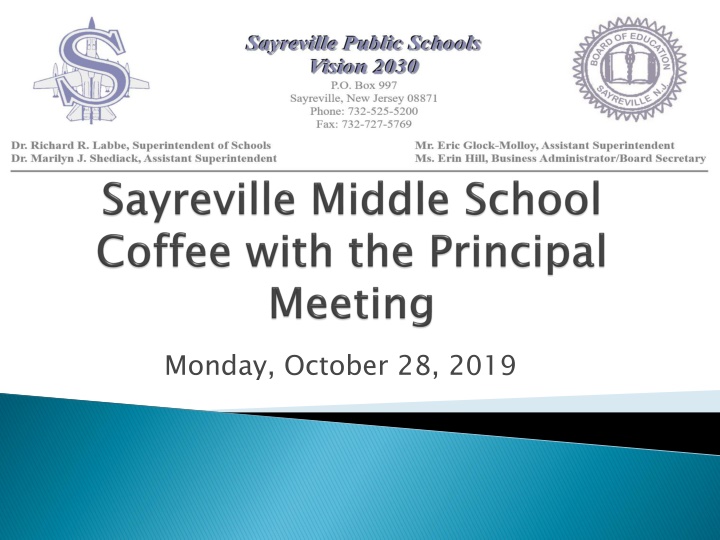
 undefined
undefined



